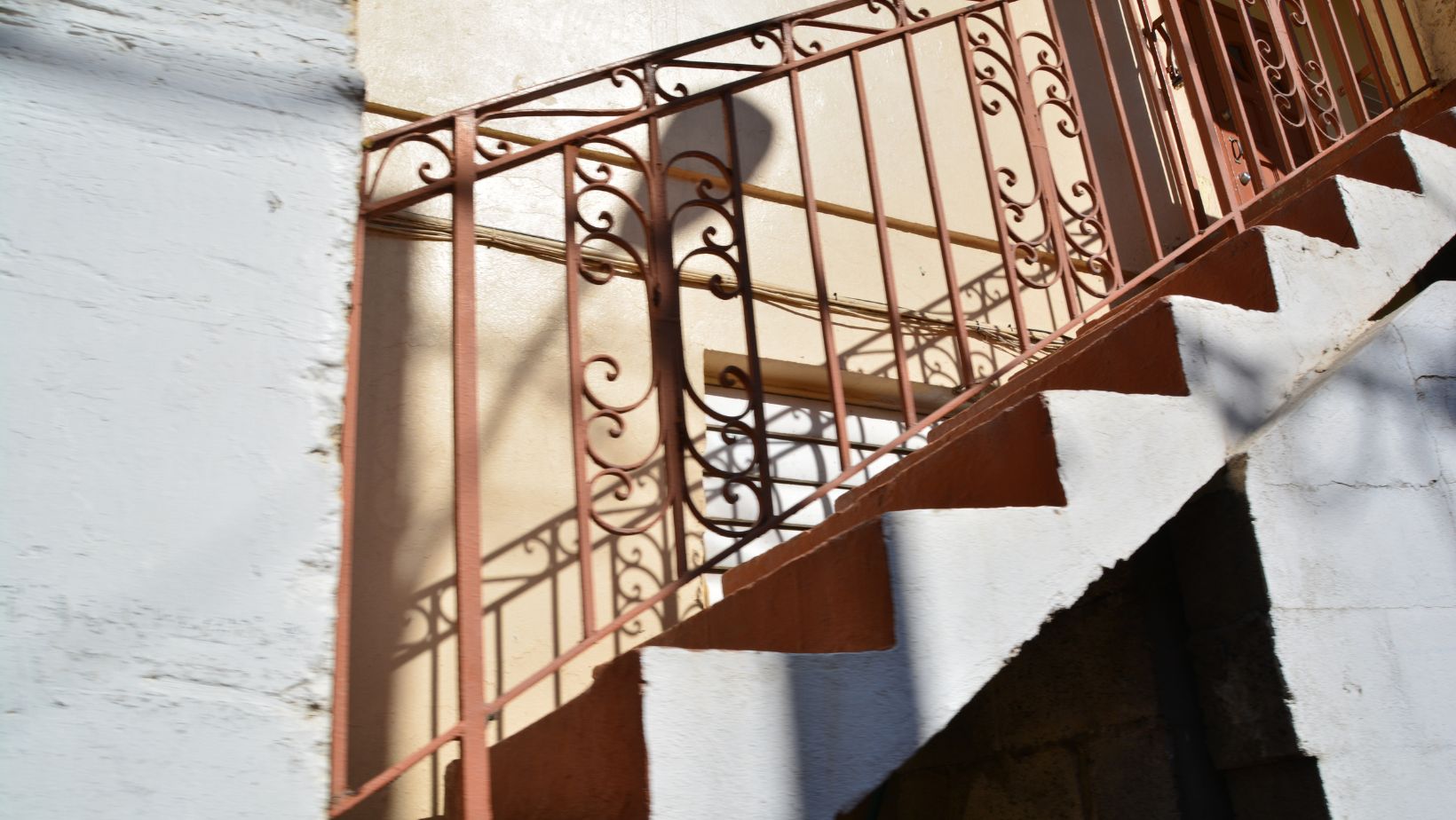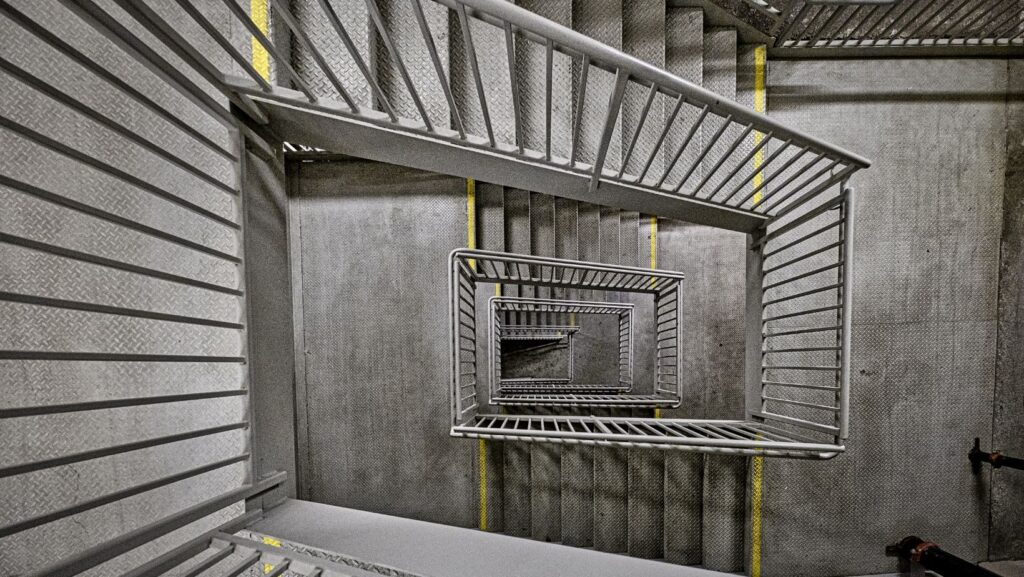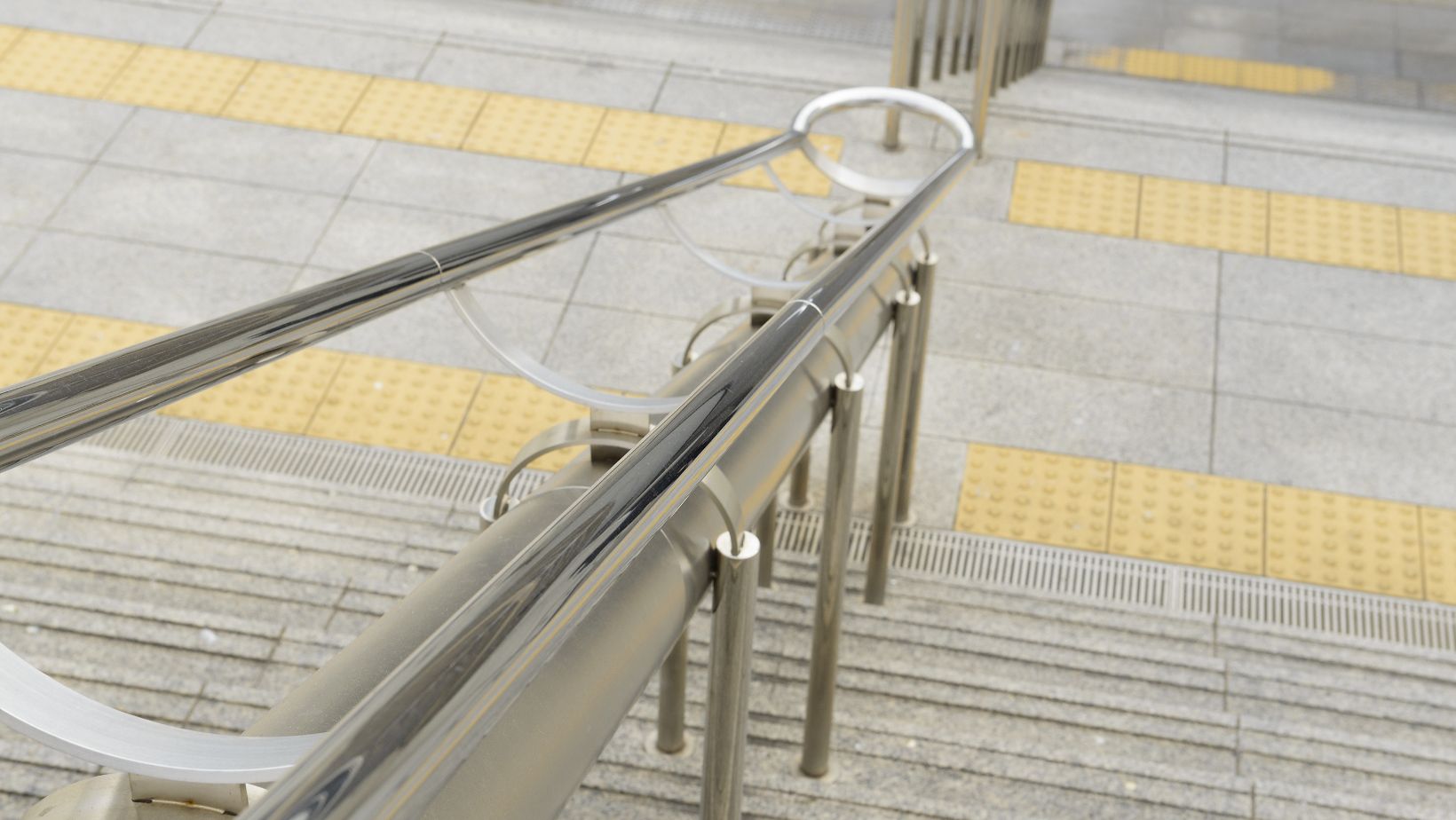Choosing the right handrail material for your staircase is an important decision, impacts both safety and style. Handrails are a key feature of any staircase, providing support and adding to the overall aesthetic of your space. With many materials available, selecting the right one can be challenging. This guide will walk you through the most popular handrail materials and help you determine the best option for your needs.
1. Wood: A Timeless and Versatile Option
Wood handrails have long been a popular choice, thanks to their warm, natural appearance and flexibility in design. From classic to contemporary homes, wood can be stained or painted to complement a variety of interior styles.
• Pros:
o Versatile and can be customized with different finishes or carved designs.
o Adds warmth and character to a space.
o Easy to refinish or repaint if the style changes over time.
• Cons:
o Requires regular maintenance, such as sanding or staining, to keep it looking new.
o Can be susceptible to damage from moisture, which may cause warping or cracking.
Wood is an excellent option for homeowners seeking a traditional, cozy feel. However, if your staircase is located in a high-traffic or damp area, you may need to consider other materials for greater durability.
2. Metal: Sleek, Durable, and Modern
For those seeking a modern and long-lasting option, metal ones are a fantastic choice, for example, offer a blend of sleek design and robust durability, making them a great option for modern homes. Metal handrails are typically crafted from stainless steel, aluminum, or wrought iron, offering a range of finishes that can suit both contemporary and industrial designs.
• Pros:
o Highly durable and resistant to wear and tear.
o Minimal maintenance is required.
o Ideal for both indoor and outdoor use due to weather resistance.
o Fits well in modern, minimalist, or industrial aesthetics.
• Cons:
o Metal can sometimes feel cold or harsh compared to other materials.
o Certain finishes, like stainless steel, may show fingerprints or smudges more easily.
Metal handrails are perfect for those who prioritize durability and a sleek, modern look. Whether you want an elegant stainless steel finish or a rustic wrought iron design, metal offers both strength and style with minimal upkeep.
3. Glass: Elegant and Modern
Glass handrails are ideal for creating a sense of openness and light. Typically framed with metal or wood, glass panels offer a contemporary and minimalist look that enhances the sense of space in any room.
• Pros:
o Provides a clean, modern aesthetic.
o Allows light to pass through, making spaces feel larger and more open.
o Easy to clean.
• Cons:
o Can be expensive compared to other materials.
o Requires frequent cleaning to remove fingerprints and smudges.
o May not provide as much physical safety grip as traditional handrails.
Glass handrails are a great choice for those looking to create a seamless, open atmosphere, particularly in modern homes or offices. They offer a sophisticated, airy feel but come with higher costs and maintenance considerations.
4. Cable Railings: Minimalist and Modern
Cable railings are another popular choice for modern and industrial-style spaces.

These railings use metal posts and tensioned cables that run horizontally or vertically, creating a sleek, minimalist design.
• Pros:
o Minimalist design enhances open spaces.
o Durable and requires little maintenance.
o Ideal for both indoor and outdoor use.
• Cons:
o May not offer the same tactile safety as traditional railings.
o Installation can be more complex and expensive than standard rails.
Cable railings are perfect for those looking for a contemporary, streamlined look. They are also commonly used outdoors, where their open design can blend with natural surroundings.
5. Stone: Luxurious and Solid
Stone handrails are a more uncommon but luxurious option, typically used in grand homes or exterior staircases. Marble, granite, or limestone can create a sophisticated and durable handrail solution.
• Pros:
o Exudes a sense of luxury and sophistication.
o Extremely durable and resistant to damage.
o Ideal for outdoor use, as stone withstands harsh weather conditions.
• Cons:
o Heavy and may require additional structural support.
o Can be costly compared to other materials.
Stone handrails are best suited for grand designs or outdoor spaces where durability and elegance are key considerations. Their natural beauty and timeless appeal make them a striking addition to any architectural style, from classical to contemporary. Stone railings not only provide a sense of permanence but also offer exceptional resistance to weathering, making them an ideal choice for outdoor installations. While they may carry a higher upfront cost, their longevity, minimal maintenance, and aesthetic value ensure they remain a worthwhile investment, particularly for high-end homes, historic properties, or public buildings where both function and form are paramount.
Key Factors to Consider When Choosing a Handrail Material
When selecting the right material for your handrails, it’s essential to strike a balance between aesthetics, functionality, and budget.
Each material offers distinct advantages and considerations depending on the context in which it will be used. Here are some important factors to take into account:
1. Safety: The primary purpose of a handrail is to provide reliable support, especially in high-traffic areas or for individuals with mobility challenges. Some materials, such as glass or cable railings, may prioritize design over a feeling of safety, offering a sleek and modern look but not always conveying the same sense of sturdiness as wood or metal. Consider the environment and users when selecting a material that feels safe and supportive.
2. Maintenance: Different materials require varying levels of upkeep to maintain their appearance and structural integrity. For example, metal railings—especially stainless steel and aluminum—are generally low-maintenance, requiring only occasional cleaning to remove dust or debris. In contrast, wood railings, though warm and inviting, may need regular sanding, staining, or sealing to prevent wear and weather damage. Glass handrails can show fingerprints and smudges easily, requiring frequent cleaning to maintain their sleek look.
3. Durability: If your handrail will be exposed to the elements, such as in an outdoor setting or near a pool, opt for materials that can withstand harsh weather conditions without deteriorating. Metal, stone, and treated wood are great options for outdoor railings, as they resist moisture, temperature changes, and UV exposure. Glass can also be used outdoors but may need special care to avoid scratches or shattering in extreme conditions.
4. Style: Handrails play a key role in tying together the overall design of your space. Choose a material that complements the existing architecture and interior décor. Wood, for instance, works well in traditional or rustic settings, adding warmth and texture, while metal and glass often suit modern, minimalist designs, offering clean lines and a sleek finish. For an industrial look, consider cable railings or wrought iron.
5. Budget: Your budget will naturally influence your material selection. Materials like wood and certain metals (such as aluminum) tend to be more affordable options that still provide style and functionality. However, if you’re looking for a statement piece or are focused on long-term durability, glass, stone, or high-end metals like bronze may come with a higher price tag but also offer distinct benefits in terms of longevity and aesthetic impact.
Conclusion
Selecting the right handrail material for your staircase or outdoor space is about more than just aesthetics—it’s a decision that affects the safety, durability, and overall functionality of your project. By carefully weighing factors such as safety, maintenance, durability, style, and budget, you can choose a material that enhances both the form and function of your space. Whether you opt for the timeless elegance of stone, the warmth of wood, or the sleek modernity of metal and glass, the right handrail can serve as both a practical feature and a design focal point.



More Stories
Why Allergy Sufferer Needs an Air Purifier at Home: Improve Your Well-Being
Minimalist Interior Design Ideas for Small Student Apartments
The Permit Advantage: How Residential Building Permits Protect Your Investment